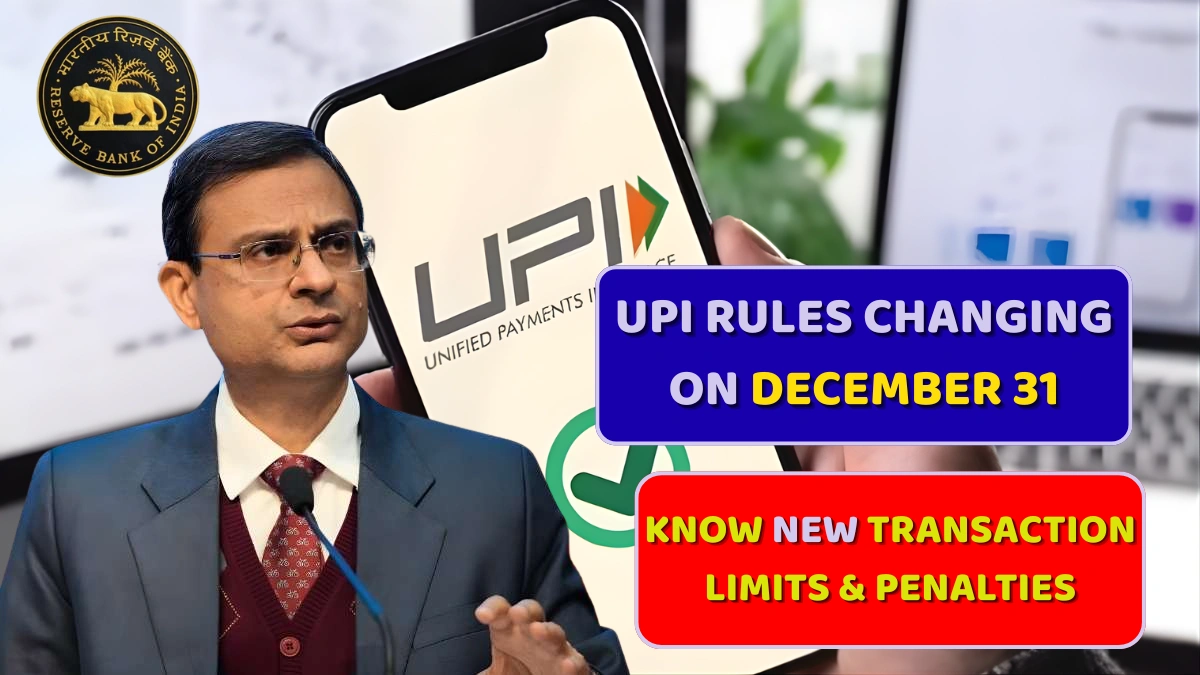India’s most used digital payment platform, UPI (Unified Payments Interface), is set to undergo important regulatory changes by December 31, 2025. The National Payments Corporation of India (NPCI) and the Reserve Bank of India (RBI) are working together to implement new guidelines related to transaction limits, user verification, and penalties for violations. These updates aim to make the UPI ecosystem more secure, reduce misuse, and improve transaction success rates as digital payments continue to grow rapidly across the country.
New UPI Transaction Limits Coming Soon
Under the upcoming guidelines, banks and payment apps such as Google Pay, PhonePe, Paytm, and BHIM are expected to revise their daily and per-transaction limits. Currently, most users can send up to ₹1 lakh per day, while select verified users (like those making education or hospital payments) are allowed ₹2 lakh per day. The new framework may increase these limits for verified or premium accounts, allowing larger transactions for individuals and businesses. However, stricter verification checks will be mandatory before such transfers can be approved.
NPCI has also hinted at limiting the frequency of balance checks and API requests to prevent system overloads. These changes will streamline backend performance and ensure smoother transactions during peak hours like salary days and festivals.
Penalties and Failed Transaction Rules
The new rules may also introduce financial penalties or restrictions for repeated failed transactions or violations of UPI usage limits. If a user attempts multiple unsuccessful transactions due to wrong PINs or technical errors, the bank or app may temporarily block further attempts for a short period. This will help reduce fraudulent activity and protect users from unauthorized account access.
Additionally, reports suggest that accounts showing unusual activity or rapid high-value transactions will face stronger authentication layers like OTP verification, fingerprint scan, or facial recognition before approval. This layered verification system aims to make high-value UPI payments more secure against phishing or scam attempts.
Inactive UPI IDs and Account Rules
Another key part of the December update focuses on inactive UPI accounts. Any UPI ID that remains unused for over 12 months may be automatically deactivated for security reasons. Users will be required to re-verify their mobile number and bank linkage to reactivate the account. NPCI believes this move will reduce system load and prevent misuse of dormant accounts that could be targeted by cybercriminals.
AutoPay and API Usage Regulations
Earlier in 2025, NPCI introduced new API restrictions effective August 1, 2025, that limited the number of balance checks and autopay requests per day. These changes are now being expanded in the December update to cover more UPI functions, including account linking, collect requests, and merchant QR-based transactions. UPI apps will need to comply with these revised API usage policies to avoid penalties or temporary suspension from NPCI.
What These Changes Mean for Everyday Users
For regular UPI users, the December 31 rule changes mean more control, security, and clarity. You may be asked to complete Aadhaar or biometric re-verification within your UPI app to continue using large transaction limits. Daily usage caps might differ slightly depending on your bank or payment service provider. Users are advised to keep their apps updated, complete KYC verification, and avoid making back-to-back large transactions to prevent technical errors or temporary blocks.
These measures also ensure that UPI remains fast, secure, and resilient even as India handles billions of transactions every month. By implementing tighter controls on limits and API requests, the system will reduce downtime and fraudulent activity during high-volume periods.
NPCI’s Focus on Digital Payment Safety
NPCI’s broader goal is to maintain India’s UPI system as the most trusted real-time payment platform in the world. The organization has been working on new frameworks to manage heavy transaction loads and enhance user safety. The changes set for December 31 are a continuation of that effort, focusing on improving transaction reliability and user authentication. As India moves toward a completely cashless economy, these reforms are critical to ensuring both convenience and compliance.
Conclusion: The new UPI rules effective December 31, 2025, mark a major step toward safer and smarter digital payments in India. With revised transaction limits, inactive account deactivation, and stricter verification protocols, users will benefit from a more secure and stable ecosystem. While most of these updates will roll out automatically through your banking or payment app, staying informed and completing any required KYC or verification steps will ensure uninterrupted access to UPI services.
Disclaimer: All figures and policy details mentioned are based on publicly available reports and NPCI circulars as of October 2025. Final transaction limits and penalties may vary by bank or payment app. Users are advised to refer to official NPCI or RBI notifications for verified information.

